I hear the question a lot in pig groups “Does this pig look pregnant”. Sometimes it’s tricky but here are ways to tell.
The best sign that a pig is pregnant is missing her estrus cycles. Pregnant pigs generally have an increased appetite, rest more, and have no interest in boars. Healthy pregnant sows will have a noticeable belly bulge after about 3 months, and the teats and vulva swell within 2 weeks of birthing.
I’ll break it down a little more for you and show you just how I manage our breeding sows.
Checking for Pregnancy in a Pig
It seems every day in various pig groups, someone is asking “Is my pig pregnant”. While that’s hard for me to say from photos, here are the signs and evidence that she’s going to have piglets.
- By 30 days of pregnancy, a pig will clearly miss her estrus cycle.
- By 8 weeks of pregnancy, the belly starts swelling and bulging out the sides.
- By 100 days of pregnancy, the vulva and mammary glands begin swelling
- Within 3-5 days of birthing, the vulva swelling is pronounced and vaginal discharge is visible.
First and foremost, if a female pig gets mounted by a boar, consider it a success and plan on it. Immediately write down the date of breeding, or as close as you can remember, and figure 120 days (about 4 months) later. Most pig farrowing (birthing) date calculators say 115 days, but 120 is closer to what I see.
Pregnancy changes a female pig’s behavior and body. Within about two weeks of a successful mating, hormones are in full swing. She often seems to get a little grumpy at the 2 or 3-week mark. not so much towards people, but towards other pigs, especially towards a boar. You may or may not notice this yet.
What if you didn’t see them breed? If you are keeping male and female pigs together, they will breed on the first functional estrus cycle. Pigs go into estrus about every 28 days. If in a full month your pig has not shown any signs of estrus, she’s almost certainly pregnant. Better try and figure out when it happened.
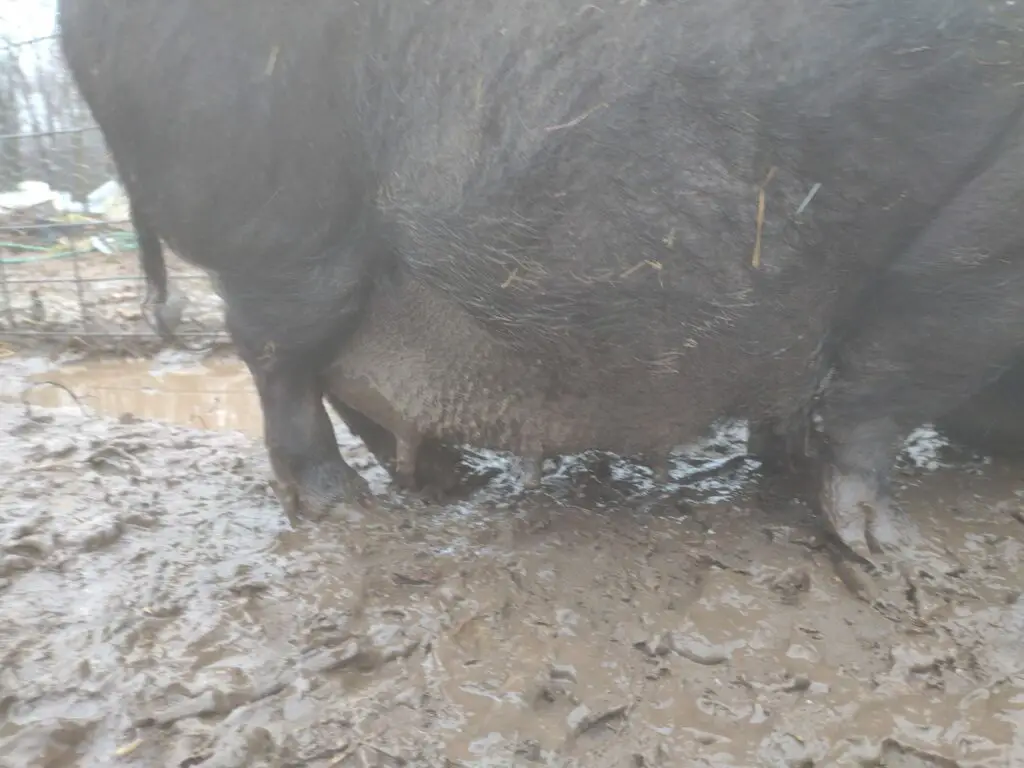
10 Signs a Pig is About to Give Birth
- Bulging, heavy, sagging belly; Often dragging to the ground.
- Severe waddling when walking
- Trouble getting up when laying down.
- Nesting
- Swelling vulva
- Vaginal discharge
- Territorial behavior around nesting area
- Tiredness
- Loss of appetite
- Laying down, heavy breathing, visible distress
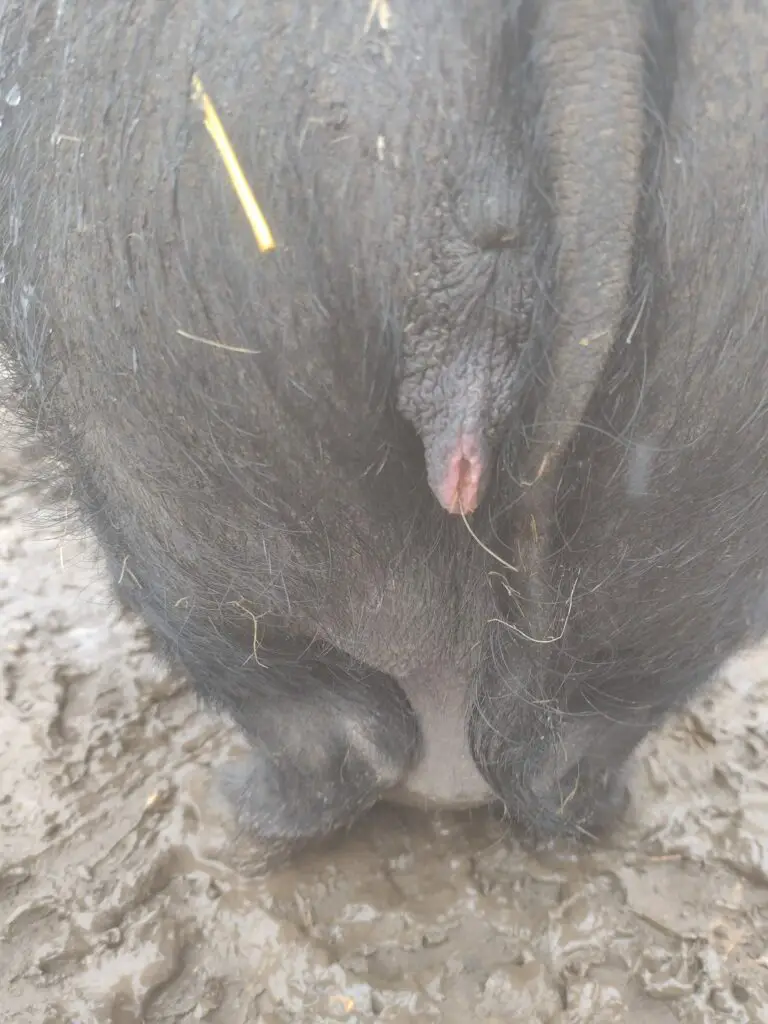
Pretty much in that order, although I wouldn’t expect every pig to exhibit all those behaviors every time. You can tell if a pig is very far along by looking at her belly. It’s quite obvious unless the pig is quite fat. That’s one of many reasons not to let your breeding pigs get fat.
A small litter, usually resulting from poor timing of the breeding, can be harder to see. But, when the piglets are ready, the belly drops and sags with severity. Even a small litter should be pretty darn obvious when the time is near. We recently had the smallest litter yet, 4 piglets. Everyone knew she looked pregnant by one month in.
When a pig is severely pregnant, they develop quite the pregnancy waddle. They start to struggle, sometimes quite a bit, when getting up to their feet. A very pregnant pig is very noticeable by their gait and waddle. They just start looking uncomfortably pregnant.
Pigs like to go into a nesting phase, usually a week or two before having their piglets. They become quite the homemaker. I watch my sows gather sticks, grass, cornstalks, and leaves to make a nest. Sometimes it’s quite the building project. Straw is the most common nesting material given to pigs.
In warm weather, I just give them enough material to make a little nest spot. In winter, I give them a shelter full of straw. That’s about 1/2 to 1 regular square bale for our small-breed pigs
When I see swelling of the vulva in a pig that I know is pregnant, it usually means there’s about a week to go. Make sure she has a proper nesting area and shelter. I’ll get more into that in a minute. Visible discharge and greater swelling of the vulva mean about 5 days to go for our pigs.
When your pig is that close, just leave her alone and let her have space. Being too involved increases stress and the likelihood of accidental injury during farrowing.
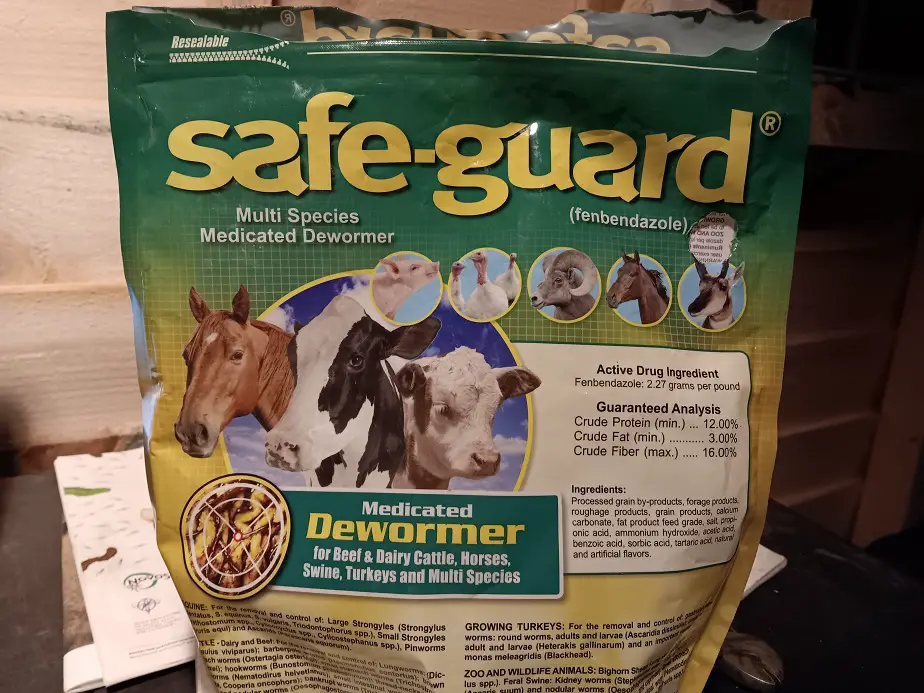
One thing you need for pigs, no matter your raising system, is a parasitic worm treatment. The best swine dewormer is Fenbendazole. It’s known by the brand name Safeguard. Safeguard is available as a medicated corn/alfalfa pellet. It’s the only way I can worm my pigs since they won’t stand still for an injection of Ivermectin. It’s easy and cheap.
- There is a stronger pellet for swine only. Here it is on Amazon
- There is a weaker pellet for general barnyard livestock, including swine. Here it is on Amazon.
I use the multi-species version because it’s what’s available in my local store and I can use it for my chickens too. It’s the most effective swine wormer and the easiest to administer. I use it on all weaned piglets and adults twice a year. Don’t go without it.
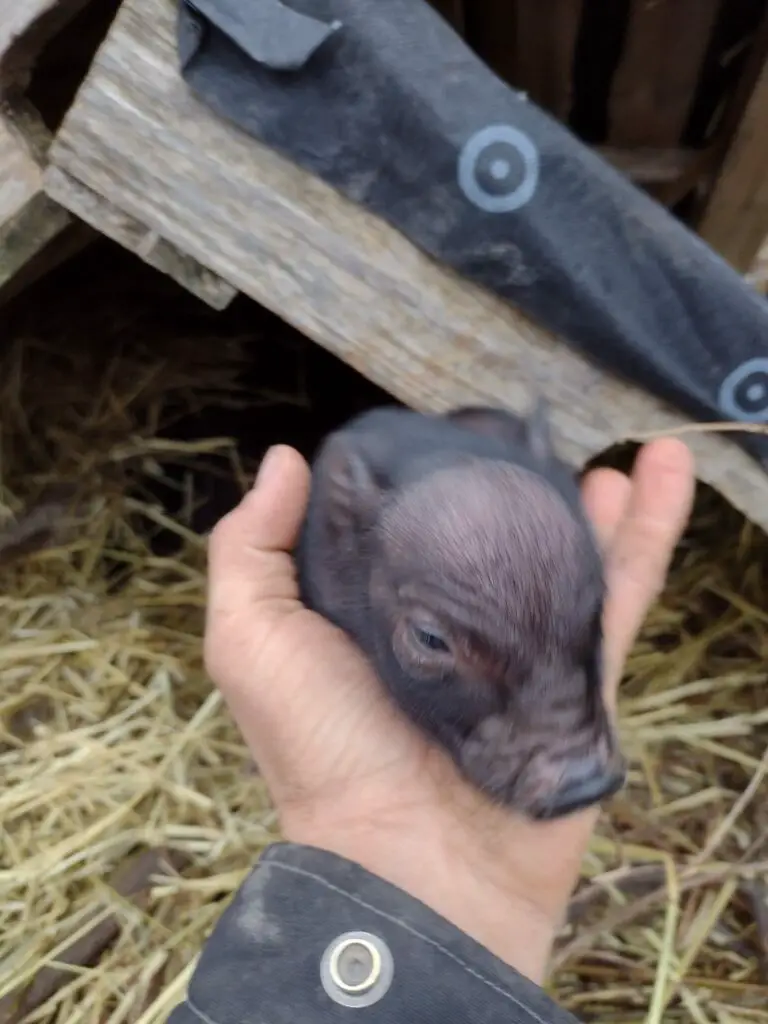
Nesting and Pregnant Pigs
Pigs need a dry, out-of-the-wind spot and some clean bedding material for nesting. We use pallet shelters and usually give some straw in addition to whatever the pigs gather by themselves. Any type of straw, leaves, or similar material will work. It should be protected from rain, snow, and excessive sun.
We had several litters in the cold, Michigan weather. The last one was born on a windy, snowy day with a temperature around 10 degrees Fahrenheit. They were all fine in our pallet shelter with a bale of dry oat straw. A good breed of pig has superb nesting instincts and skills.
When the pig starts nesting, don’t mess with it. The only thing I usually do is make sure it’s staying dry if it’s raining or wet outside. I’ll quickly check it out when she’s busy eating. In cold weather, it must absolutely be dry and out of the wind.
In very hot weather, don’t give them too much straw. It can get quite warm if there’s not enough airflow. Just make sure it’s soft and dry.
How to Handle a Pregnant Pig
Pregnant pigs should never be stressed and should have their own space. You shouldn’t have a nesting pig in a small pen with other pigs. It gets stressful and causes fights. Ensure that they have plenty of clean water and that they get enough food.
Pregnant pigs aren’t usually too grumpy, but they can be on occasion. I always talk about stress when it comes to animals. Stress causes physical and behavioral problems in animals. Make sure they aren’t stressed. My pigs usually act just as nice when pregnant, they just slow down as it progresses.
Pregnant pigs are generally fed a little less protein in their diet. This actually can help in the delivery process by helping make sure the piglets aren’t too big. A high-protein diet is correlated with an increase in stuck piglets and excessive tearing from farrowing.
Most farmers I’ve talked to like a slightly less protein feed (around 14 percent protein) for pregnant pigs. It can certainly help. Basically, just add a bit of grain to their feed to water down the protein.
How to Handle a Pig That Just Gave Birth
When a sow has just had her litter, leave her alone at first. She will need to rest and regain her strength. Sows get protected immediately after having a litter. She won’t want you in the nesting area. Let her have her space. Make sure she has clean water and food available, but she might not want any for a while.
I like to go check in on the litter approximately the day after I hear little pig squeals in the nest. With the sow is out eating, I’ll make a calm, but very quick look to get a head count and clear out any that didn’t make it. Generally, the sow is only out of the nest for a few minutes at a time, a few times a day.
I like to give a little molasses in the water, just to encourage her to drink because sometimes she doesn’t want to drink much for a day or two. The sow needs plenty of water to produce enough milk for the piglets. Nursing sows drink a lot of water.
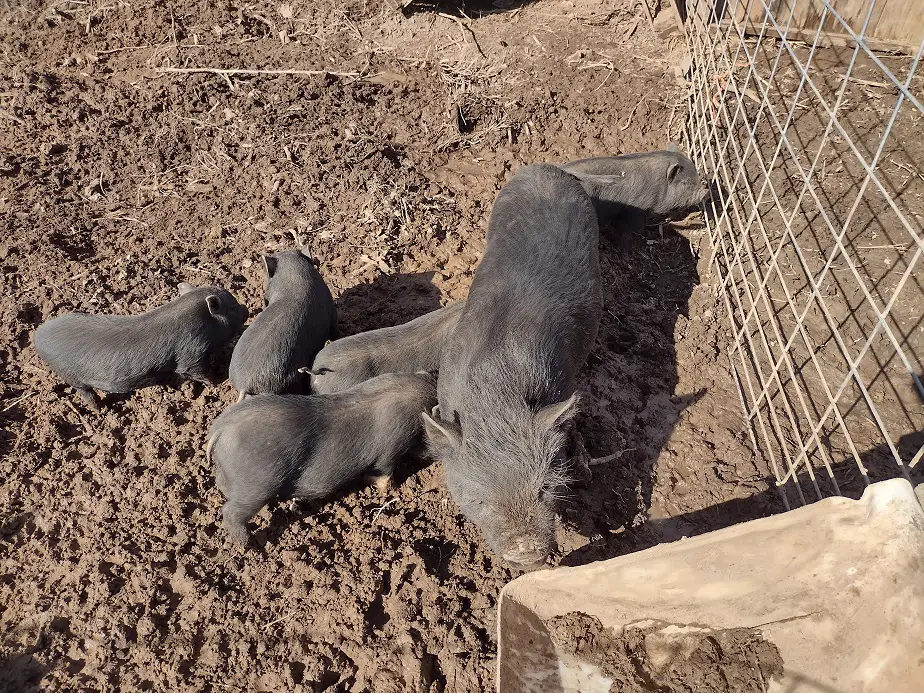
When to Wean Piglets
Piglets should be weaned (separated from the sow) at around 8 weeks old. By that age, piglets are hardly nursing anymore and should be used to eating the same food as the sow. Wean piglets completely by simply separating them from the sow and placing them together into their own enclosure.
I wean my piglets at 8 weeks unless I get behind and forget. By 4 weeks, they are already munching on pig food with the sow and by 6 weeks they are eating more than they are nursing. By 8 weeks, the sow is already trying to wean the piglets herself and they become a bother to her as they try to keep nursing.
Weaning at 8 weeks is not cruel and does not impact the growth or health of the piglets in any negative way. It does benefit the health of the sow because the piglets become quite a bother to her at that point.
Related Articles:

